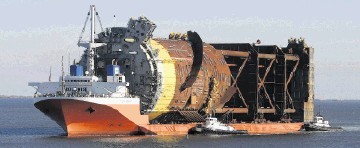
Already soaring oil and gas spending is set to soar by a third to more than $1.6trillion over the next four years, says upstream analysts IHS.
They say in their latest upstream report that global capital and operating expenditures (Capex and Opex) are set to reach a combined record of $1.23trillion for 2012 and are expected to rise to $1.64trillion in 2016,
Capex on new projects and Opex on existing plays are expected to reach new records of $728billion and $500billion in 2012 this year alone.
Spending increases are projected for each region of the globe, according to the report, reflecting a large increase in activity across the oil and gas industry as sustained high oil prices (and gas prices outside of North America) remain well above break-even levels for most proposed oil and gas projects. At the same time, tighter markets are leading to high project cost inflation worldwide.
“The brief lull in expenditures in 2009 and 2010 caused by the Great Recession is behind us. Robust oil prices and the growth of North American unconventional gas – which already accounts for $128billion in 2012 spending – will create new high water marks for investment in Capex and Opex that surpass pre-recession highs,” said David Hobbs, IHS chief energy strategist.
“Understanding where spending is headed will be critical for both buyers and sellers in the supply chain to meet market needs.”
North America leads all regions with total upstream spending of $392billion for the current year. Capex is expected to reach $274billion in 2012, driven by the region’s boom in unconventional production including oil sands, tight oil, shale gas, tight gas, and coal-bed methane, which are forecast to account for $128billion of the 2012 total.
Driven by continued investment in unconventional resources, total North America spending is expected to reach $528billion in 2016. Europe by comparison is running well behind North America.
Asia-Pacific follows North America with $238billion in total 2012 upstream spending, comprised of $169billion Capex and $69billion Opex. This total is expected to rise to $323billion in 2016.
While onshore projects are the primary driver for North American spending growth, the prominent source of the rise in Asia-Pacific spending is offshore.
Asia-Pacific currently has the highest 2012 offshore spending of any region at $104billion, of which $67billion is Capex. The Capex spend alone is 40% higher than for Europe where the current year’s forecast is $48billion and $57billion in 2016, with Norway driving growth.
Meanwhile, Asia-Pac is set to continue as a key contributor to growth in global offshore Capex going forwards, driven by major offshore developments in the region, particularly offshore Australia.
Offshore Capex for all regions is estimated to reach $213billion this year, well above the prior 2008 peak, and are projected to reach $297billion in 2016, of which the Asia-Pacific region will represent 31%.
The Middle East is also expected to be one of the main growth regions in terms of total spending going forwards, with Capex rising by nearly 80% from 2011 to 2016 driven by increased drilling activities in Saudi Arabia and particularly Iraq. This compares to a global Capex increase of 45% globally over this same period.
Africa spending will be driven by growth in offshore activity going forward; up 62% from 2011 through 2016. This is linked to both ongoing developments and upcoming developments in new oil and gas producing countries such as recent discoveries in East Africa as well as the western Gulf of Guinea.
Latin America, with total spending of nearly $230billion, is to be the second largest offshore region after Asia-Pacific in terms of upstream Capex through the 2012-2016 forecast period, led by field development and exploration spending in offshore Brazil, with a growing share of spending going to pre-salt field development.
IHS says onshore continues to command the largest share of Capex, but in terms of growth, offshore Capex will continue to outpace onshore going forwards, rising a total of 58% from 2011 through 2016, compared to a 39% rise onshore.
